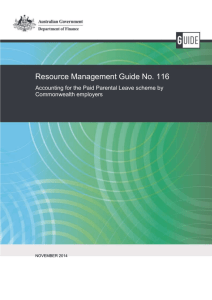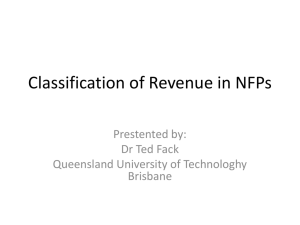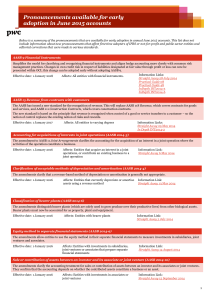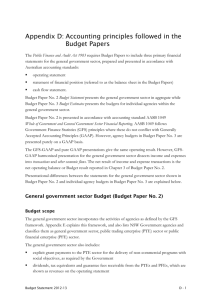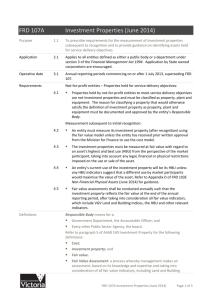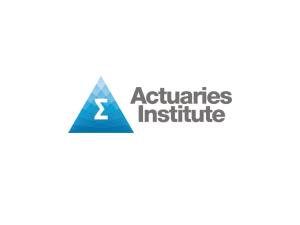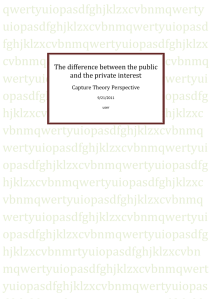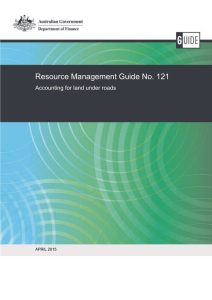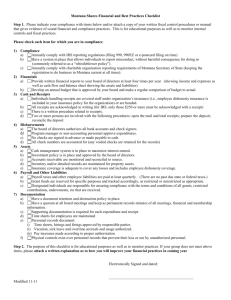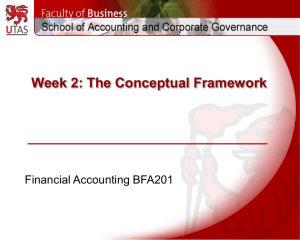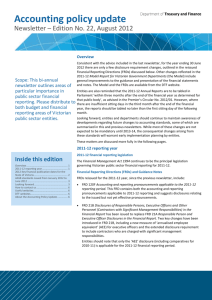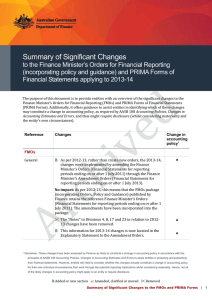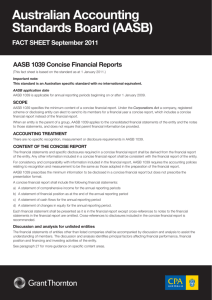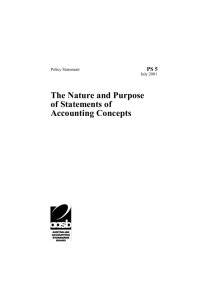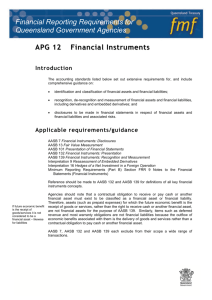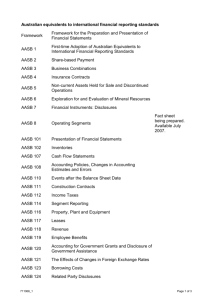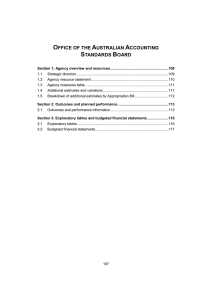Accounting Guidance Note No. 2011/1
advertisement
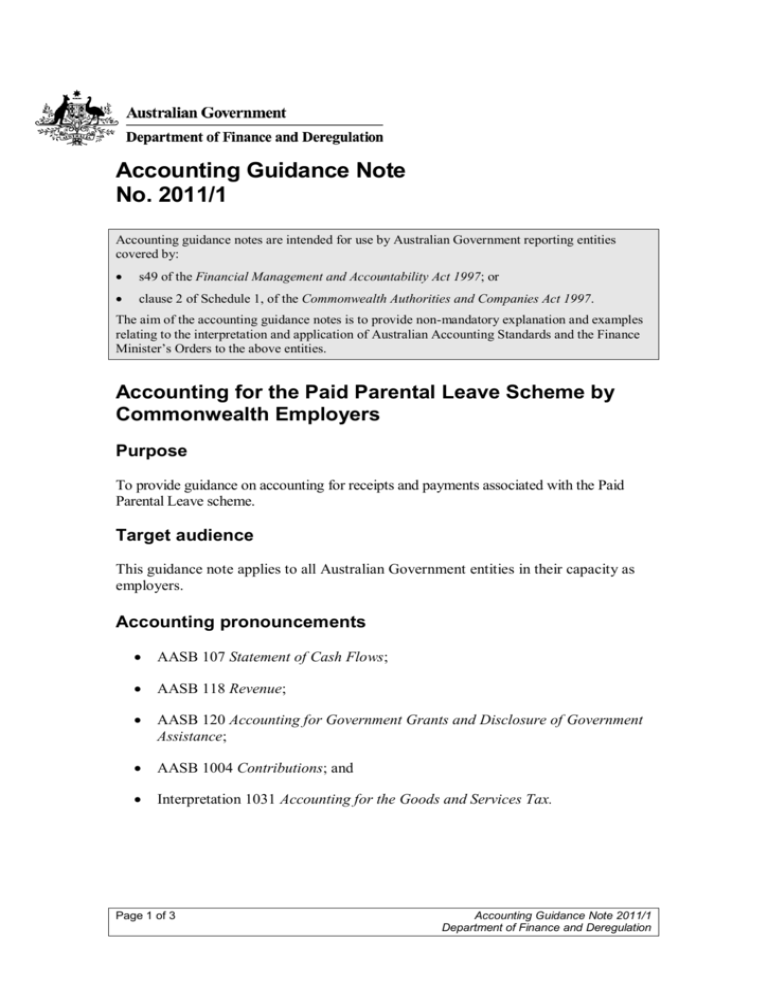
Accounting Guidance Note No. 2011/1 Accounting guidance notes are intended for use by Australian Government reporting entities covered by: s49 of the Financial Management and Accountability Act 1997; or clause 2 of Schedule 1, of the Commonwealth Authorities and Companies Act 1997. The aim of the accounting guidance notes is to provide non-mandatory explanation and examples relating to the interpretation and application of Australian Accounting Standards and the Finance Minister’s Orders to the above entities. Accounting for the Paid Parental Leave Scheme by Commonwealth Employers Purpose To provide guidance on accounting for receipts and payments associated with the Paid Parental Leave scheme. Target audience This guidance note applies to all Australian Government entities in their capacity as employers. Accounting pronouncements AASB 107 Statement of Cash Flows; AASB 118 Revenue; AASB 120 Accounting for Government Grants and Disclosure of Government Assistance; AASB 1004 Contributions; and Interpretation 1031 Accounting for the Goods and Services Tax. Page 1 of 3 Accounting Guidance Note 2011/1 Department of Finance and Deregulation Legislative requirements Finance Minister’s Orders for Financial Reporting (FMOs): o Division 19 Income – General Information (Excluding Appropriations); and o Division 100 Recognition of Appropriations – General Information; and Paid Parental Leave Act 2010. Definitions used Revenue is inflows of economic benefits during the period arising in the ordinary activities of an entity when those inflows result in increases in equity, other than..[equity contributions] (AASB 118.7). Background 1. From 1 January 2011, the Paid Parental Leave Act 2010 enables parents of newborn or newly adopted children to take up to 18 weeks in leave, paid by the government at the national minimum wage rate. 2. Payments will be taxable and subject to income and residency tests. Payments are not salary for workers compensation purposes and this leave is not counted as paid leave. 3. Employers are not obliged to make payments unless they have received funding from the government prior to payroll cut off. 4. The scheme is being phased in between 1 January 2011 and 30 June 2011. Key points Statement of Comprehensive Income 5. Finance is of the view that receipts received by employers under the scheme are not revenue for the purposes of AASB 118. Consequently payments to employees for parental leave are not expenses. 6. There is an alternative view applying to for-profit entities only that they should recognise the receipts as grants, and hence be recorded as revenue (with corresponding expenses). For-profit entities adopting this approach should follow AASB 120 and offset revenues and expenses in the Statement of Comprehensive Income. Division 19 of the FMOs has been updated to support this offset for transactions which relate to the scheme. Page 2 of 3 Accounting Guidance Note 2011/1 Department of Finance and Deregulation Balance sheet 7. Where employers have received amounts at balance date that have not yet been paid to employees, they must be accounted for as cash and a liability (i.e. payable). Statement of Cash Flows 8. For the purposes of AASB 107, receipts and payments must be accounted for as operating cash flows. 9. Cash flows associated with the scheme can either be reported on a gross basis, or a net basis in accordance with paragraph 22(b) of AASB 107. Other issues Relevant Agency Receipts 10. Regulation 15 of the Financial Management and Accountability Regulations 1997 provides that amounts receipted by employers under the scheme are ‘relevant agency receipts’ and may be retained and used by Financial Management and Accountability Act 1997 (FMA Act) agencies in accordance with section 31 of the FMA Act. Accounting and recording processes 11. Entities are responsible for determining the payroll, accounting, recording and reconciliation processes relating to receipt and payment of parental leave. Disclosure requirements 13. Except for paragraph 14, paid parental leave receipts are to be disclosed in the financial statements of the entity as ‘relevant agency receipts’ (section 31of the Financial Management and Accountability Act 1997). 14. To the extent that for-profit entities adopt the approach outlined in paragraph 6 above, they are required prepare the disclosures required by AASB 120.39 in relation to amounts received under the scheme. Contacts Questions or comments about this Guidance Note should be addressed to Accounting Policy Branch at accountingpolicy@finance.gov.au. Page 3 of 3 Accounting Guidance Note 2011/1 Department of Finance and Deregulation
